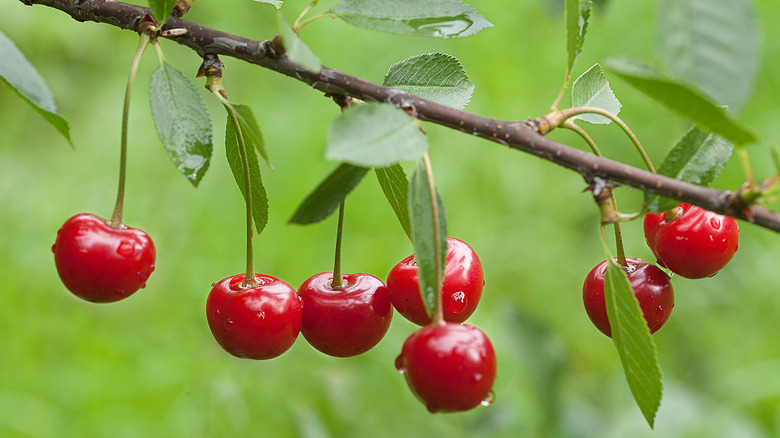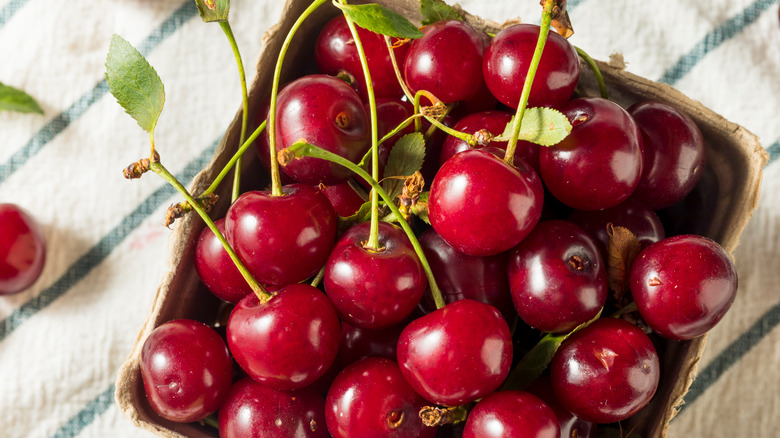The Real Reason So Many Cherries Are Grown In The Midwest
For such a small fruit, cherries pack a big punch. The stone fruit can shine in a cherry pie, soak up the flavors of bourbon, and chill in a chocolate-covered ice pop. They also pack a nutritional punch. Per WebMD, cherries are high in fiber, potassium, magnesium, antioxidants, and vitamins A, C, and K. Plus, they are low in calories.
Cherries are mainly found in two types: tart and sweet. Tart cherries are often a preferred choice for baking because they retain their shape and allow the level of sweetness to be tweaked in recipes. Sweet cherries are good for snacking. The two types of cherries grow in two different regions of the U.S. Sweet cherries are grown in California and in Pacific Northwest states like Oregon and Washington. However, tart cherries thrive in the Midwest. Michigan is the top cherry producer with 23,000 acres of tart cherry trees (per USDA). So what makes the Midwest ideal for tart cherries?
Midwest is best for tart cherries
The climate of the Midwest is perfect for growing tart cherries. In order for cherry trees to develop properly, according to Garden Guides, they need the cold temperatures of winter. In the summer months, they also need a place with moderate temperatures that isn't prone to drought. This makes the Midwest ideal for tart varieties like Black Tartarian and Early Richmond.
Along with Michigan, Wisconsin is also a top cherry producer. In this Great Lakes-bordering state, Lake Michigan helps moderate the climate, according to Garden Guides; there, cherries thrive most in sunny areas with well-drained, fertile soil and low wind. And per Lautenbach's Orchard Country, Wisconsin's Door County has alkaline soil and limestone deposits that help create perfect conditions for growing cherries. It would make sense, then, why Traverse City, Michigan, is known as the cherry capital of the world and Door County, Wisconsin, is dubbed "Cherryland, U.S.A."

